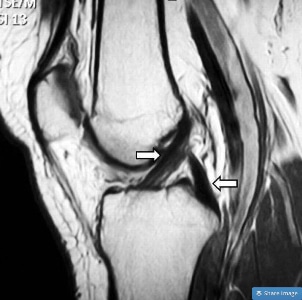3 Ways to Avoid Loss of Motion After ACL Reconstruction
Approximately 200,000 anterior cruciate ligament, or ACL, injuries of the knee occur annually in the United States, leading to nearly 100,000 ACL reconstruction surgeries. This makes ACL reconstruction one of the most common orthopedic surgeries.
While excellent outcomes can be expected following surgery, not everyone is completely satisfied or returns to their full level of activity. However, the majority of complaints following surgery can often be avoided with proper rehabilitation.
The most common complication and cause for poorer outcomes following ACL reconstruction is motion loss, particularly loss of full knee extension. The inability to fully extend the knee results in abnormal joint motions, scar tissue formation in the front of the knee joint, and subtle changes in normal knee mobility. Thus, one of our goals is to achieve at least full extension and even some degree of hyperextension during the first few days postoperatively. As the patient progresses and the knee’s homeostasis is restored, we eventually work to restore symmetrical knee extension motion.
Many people have a certain degree of knee hyperextension, meaning it extends past a straight 0 degrees. Normal knee hyperextension is approximately 5 degrees but I’ve seen people have as much as 15-20 degrees of hyperextension.
All too often, I hear from patients that they were told that full knee extension equal to the opposite knee is not needed and that 0 degrees is good enough. Well, I’ve seen these patients a year or two out from surgery and let me tell you, it’s not good enough. Obtaining symmetrical extension (usually some form of hyperextension) is completely needed for multiple reasons.
A recent study showed that just a simple loss of 3° to 5° of knee extension resulted in worse outcomes and satisfaction after surgery.
Any loss of knee extension will cause long term issues Previous studies have shown anterior knee pain, patellofemoral pain, quadriceps weakness, and long term inability to return to daily activities and sports. I’ve also seen a 2 times increase risk of knee arthritis if the patient doesn’t obtain full ROM postoperatively. As you can see, it is critical that the patient regain full knee ROM, particularly hyperextension similar to the opposite knee.
How to Treat Loss of Knee Extension
The first step in treating someone with motion loss of ACL reconstruction is avoiding loss of motion during the early phases of rehabilitation. It is extremely important to find a good physical therapist and to start therapy soon after surgery. This will include specific exercises, stretches, and manual therapy to assure your knee and patellofemoral joint are progressing well.
On top of this, we educate our patients on performing multiple bouts of hamstring and calf stretches with a wedge under the heel to maintain soft tissue flexibility in the back of the knee. During both of these exercises, emphasis should be placed on moving the knee into full extension. This can be done throughout the day no matter where the patient happens to be…so no excuses!

Another technique that is really helpful is the use of a low-load, long-duration stretch, meaning a gentle stretch held for a long amount of time. This tends to help people improve mobility, especially those that are in more discomfort after surgery.
This can be performed by placing a 5-10 pound weight over the thigh with the heel propped up and gentle allowing the overpressure of the weight to stretch the knee into extension. The patient is instructed to use this stretch for 10-15 minutes, 2-4 times per day.. If someone is starting to lose motion, the frequency is often increased to total at least 60 minutes per day. We utilize this technique immediately following surgery to maintain and improve knee extension.
I prefer this technique over the prone knee hang position for 3 reasons. First, the patient usually reports they feel vulnerable lying in on their stomach with their leg hanging off the table or bed. Second, it’s very difficult to control the pelvis and hamstring influence on restoring the knee’s hyperextension. Finally, I’ve shown many people the supine position after they’ve done the prone hangs with other therapists and 99% like it better than the prone hangs. That speaks volumes to me!
Finally, once motion is improving, we perform functional tasks utilizing this new mobility to lock in our gains. We have our patients perform backward walking to create an extension moment about the knee. We first do this in a controlled position while stepping over cones. We then progress to retro treadmill walking for 10-15 minutes at a time to further encourage that extension motion. I’ve had great success at improving a patient’s knee extension when they’ve been told previously that they’ll never get it to return.
The literature seems to strongly show that restoring extension is imperative to a successful outcome and an asymptomatic knee long-term. Loss of knee extension mobility will almost certainly lead to long term knee issues that will continually hamper the patients ability to return to their normal function. Use these three techniques to avoid loss of motion following ACL reconstruction and improve your outcomes.









